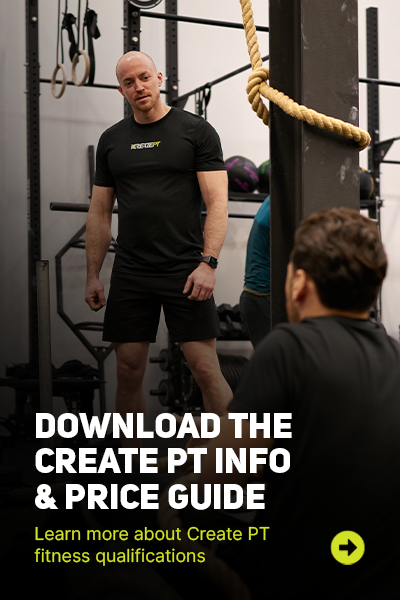Online coach or personal trainer?
The purpose of this blog is to inform and educate you on the pros and cons of both online coaching and personal training, and help you make an informed decision when it comes to reaching your fitness goals.
Online coaching is a form of personal training that takes place remotely, usually via video calls, apps or messaging, while personal training involves working with a trainer in person, typically at a gym or fitness facility. Both options have their own unique advantages and disadvantages and it’s important to consider what works best for you.
Advantages of an Online Coach
Convenience and flexibility: One of the biggest advantages of online coaching is that it allows you to train from the comfort of your own home or wherever you have an internet connection, at a time that suits you best. This is particularly beneficial for those who have busy schedules or who travel frequently.
Cost-effectiveness: Online coaching can often be more affordable than in-person personal training, as there is no need for the trainer to rent a gym space or travel to see clients.
Access to a wider range of coaches and programs: You have access to trainers from all over the UK and even internationally. This allows you to find a coach that specialises in your specific goals or needs.
Ability to track progress and make adjustments: Online coaches use various tools like apps, spreadsheets and software to track your progress, and make adjustments to your plan as needed. This allows for a more efficient and effective training experience.
Advantages of a Personal Trainer
Personalised attention and accountability: When working with a personal trainer, you receive one-on-one attention and guidance throughout your training sessions. This level of personalisation and accountability can help ensure that you are staying on track with your fitness goals and make progress faster.
Hands-on instruction and proper form: A PT can provide hands-on instruction and guidance on proper form and technique for exercises, which can help prevent injury and ensure that you are getting the most out of your workouts.
Access to equipment and facilities: Personal trainers often have access to gym equipment and facilities, which can provide a wider range of training options and allow for more challenging and varied workouts.
Motivation and encouragement: PTs can provide motivation and encouragement to help you push through difficult workouts and stay on track with your goals.
Potential for faster results: A combination of personalised attention, hands-on instruction, access to equipment and facilities and motivation, can often lead to faster results than training on your own.
Disadvantages of Online Coaching
Lack of hands-on instruction: Online coaching lacks the hands-on instruction and guidance, which can make it more challenging to understand the ability of the client and programme accordingly.
Limited ability to assess form and technique: Without the ability to see the client in person, online coaches may have difficulty assessing form and technique, which can make it more challenging to correct any issues and prevent injury.
Dependence on self-motivation: Following an online programme relies heavily on self-motivation and discipline, which may not be suitable for those who find it hard to motivate themselves.
Potential for miscommunication and lack of accountability: There is a greater potential for miscommunication or lack of accountability, which can make it more challenging to stay on track with your goals and make progress.
Disadvantages of Personal Training
Higher cost: In-person training can be more expensive as the trainer has to rent a gym space or travel to clients, which can increase the cost of the service.
Limited flexibility with scheduling: PT sessions typically need to be scheduled in advance and may not be as flexible, which can make it more challenging for those with busy schedules.
Dependence on location and availability of trainers: Personal training is location dependent, and the availability of trainers in your area can be limited, making it more difficult to find a trainer that meets your needs and schedule.
Limited options for personalisation and customisation: Personal training sessions can be tailored to individual needs but to a certain extent, and may not be as flexible or personalised as online coaching, which can have a wide range of programs and plans.
Factors to Consider when Choosing between Online Coaching and Personal Training
Goals and objectives: The most important factor to consider is your fitness goals and objectives. It’s essential to determine what you want to achieve, and then consider which option will best help you reach those goals.
Budget and financial considerations: Your budget and financial considerations are also important factors to take into account. Online is often more cost-effective, but personal training may be necessary for those who require more hands-on instruction and guidance.
Availability and accessibility: Online coaching can be more convenient and flexible as you can do the workouts whenever and wherever suits you, but if you lack motivation having an in-person coach may be necessary to keep you on track.
Personal preferences and comfort level: You’ll need to consider whether you’re comfortable with in person contact, if you’re quite introverted you may prefer communicating via an app rather than having to make conversation for an hour. Similarly, if you struggle with technology, or enjoy chatting then in person coaching will be more suited to you.
How to Find a Qualified Online Coach or Personal Trainer
Research and referrals: One of the best ways to find a qualified coach is to do your research and ask for referrals from friends, family, and colleagues. Look for coaches or trainers that specialise in your specific fitness goals and have a good reputation in the industry.
Credentials and certifications: When researching potential online coaches or personal trainers, be sure to check their credentials and certifications. Look for coaches or trainers who have relevant qualifications and certifications from reputable organisations in the fitness industry.
Reviews and testimonials: Another way to find a qualified online coach or personal trainer is to read reviews and testimonials from previous clients. This can give you a good idea of the coach or trainer’s experience, expertise, and effectiveness.
Communication and rapport: It’s important to establish good communication and rapport with your coach. Make sure that you feel comfortable communicating with them and that they understand your goals and objectives.
Combining Online Coaching and Personal Training
Benefits of using both: Combining online coaching and personal training can provide the best of both worlds. The personalised attention and accountability you get in person, with the convenience and flexibility of online.
How to make the most of both: To make the most of both, it’s important to find the right balance and use each method in a way that complements the other. For example, incorporating virtual check-ins with an online coach, and in-person sessions with a personal trainer.
Examples of hybrid programs: Many fitness companies and personal trainers now offer hybrid programmes that combine online coaching and personal training. This could include virtual training sessions, online workout plans, and regular check-ins with a personal trainer.
Conclusion
In conclusion, online coaching and personal training are both excellent options for achieving fitness goals. Online offers the convenience and flexibility of training from home, as well as access to a wider range of coaches and programs. Personal training, on the other hand, provides personalised attention, hands-on instruction and proper form, access to equipment and facilities, and motivation and encouragement.
Both have their own advantages and disadvantages, and it’s essential to consider factors like goals and objectives, budget, availability and accessibility, and personal preferences when choosing between them.
To find a qualified online coach or personal trainer, research and referrals, credentials and certifications, reviews and testimonials, and communication and rapport should be considered. Combining online coaching and personal training through hybrid programs can also be an effective option.
In summary, both have their own benefits and can be used to achieve fitness goals. It is crucial to consider personal preferences and budget when choosing between the two. And by combining both options, the best of both worlds can be achieved.
Check out “The essentials of online personal training” by Register of Exercise Professionals (REPs) for some further reading on the topic.








